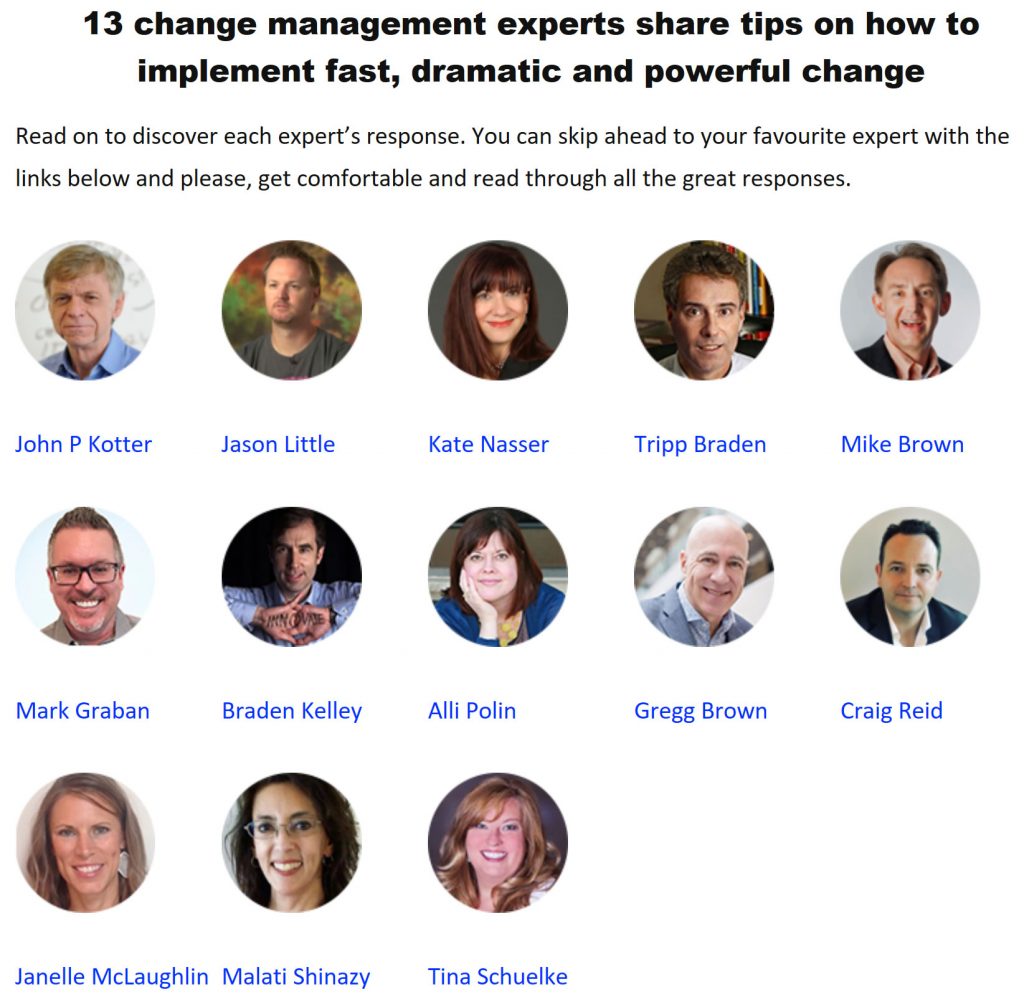Recently my colleague Daniel Lock collected and published points-of-view (POV) from 13 change management experts on implementing fast, dramatic and powerful change.
Here is mine:
If your change effort or project begins in a Microsoft Word document, you’re already in a whole world of trouble. Change is a human endeavor, so the most powerful way to embark on creating a dramatic and powerful change on an aggressive timeline is to surface the key challenges and opportunities as early as possible.
That doesn’t happen with a single individual tapping away at the keys entering prose or data into a traditional project charter. Instead, I recommend taking the following three steps to accelerate your change effort or project and increase its chances of success:
1. Evaluate the Change Readiness of Your Organization
Too often we just jump in and announce the start of projects and change initiatives without even looking around to see if the resources that are going to be crucial to our success are even available.
Convene a cross-functional change planning team to identify the resources you are going to need to successfully complete the project (physical, financial, human, etc.). Then begin to draft an initial high level project schedule including when different resources will need and map that against their availability (including their commitments to other existing and potential projects and change initiatives) to create a change readiness heat map.
My PCC Change Readiness Framework and Worksheet from the Change Planning Toolkit™ are also useful tools for evaluating your change readiness.
2. Architect Your Organization for Change
One of the biggest barriers to successful change initiatives is viewing change management as a subset of project management when we should really all be instead viewing project management as a subset of change management, and but one of Five Keys to Successful Change.
Consciously approaching the design of our organization and how it operates from the outside as changes in the environment dictate changes inside our organization can benefit from using a tool like the Architecting the Organization for Change framework.
3. Develop a Holistic View of the Change You’re Trying to Make
Change planning should never be a solo activity. You must identify those individuals who can verbalize the current and desired states, the risks and resources, identify the potential barriers and benefits, craft effective communications, etc.
You need to also involve people who know how to leverage a human-centered approach to affecting change using The Eleven Change Roles and who can build and maintain momentum by understanding and harness The Eight Change Mindsets that cause people to choose change.
I truly believe that only by taking a more visual, collaborative approach to change and capturing the key information on a single page using the Change Planning Canvas™ as you build your change plan, will you ever create and sustain the alignment necessary to beat the 70% change failure rate.
Click here to read responses from the 12 other change management experts

![]() Sign up here to get Human-Centered Change & Innovation Weekly delivered to your inbox every week.
Sign up here to get Human-Centered Change & Innovation Weekly delivered to your inbox every week.

Thanks for participating and for sharing, Branden.
Your advice was gold!
*Braden. Autocorrect!